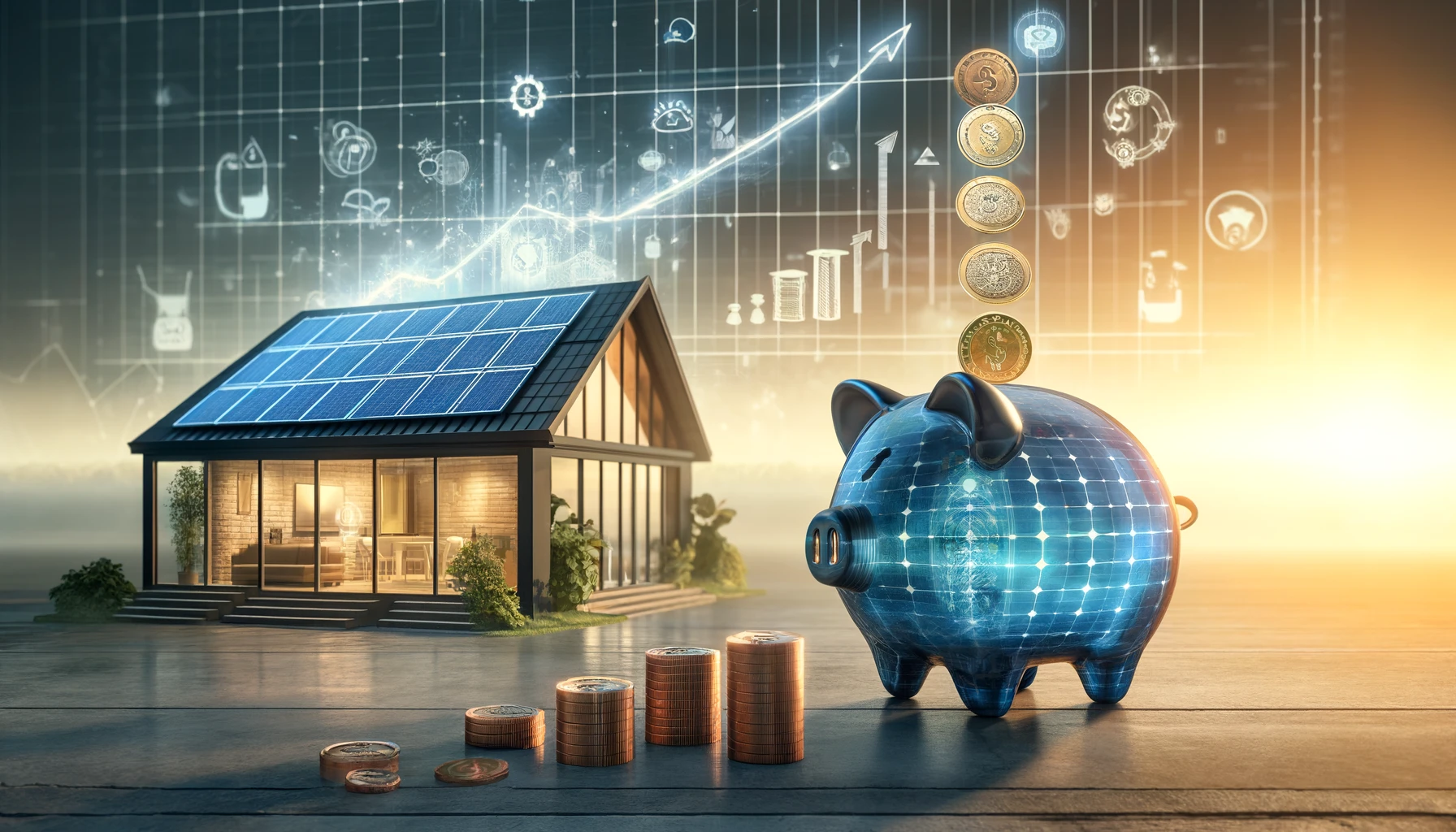Feeling a bit overwhelmed by all the solar lingo? Don’t fret, let’s delve deeper into the world of photovoltaic (PV) technology – the transformative process that harnesses the power of sunlight to generate electricity. Picture it as your very own power station right on your roof, silently soaking in the sun’s rays to provide you with clean and sustainable energy. In this extended exploration of PV technology, we’ll demystify its components and delve into the multifaceted advantages it offers.
The Marvel of PV Technology
PV, an acronym for “Photovoltaic,” may appear imposing at first glance, but its essence is surprisingly straightforward. At its core, PV technology executes a few fundamental functions that make it an invaluable contributor to sustainable energy production:
1. Absorption of Sunlight
Solar panels, the workhorses of PV systems, are equipped with a special material that has a unique ability to capture sunlight. This material is typically made up of layers of semiconductor materials like silicon. When sunlight strikes these panels, they absorb photons, which are tiny packets of energy. This initial step is crucial as it’s where the magic begins.
2. Creation of Electricity
Once the sunlight is captured, the energy it carries stimulates the electrons within the semiconductor material. This stimulation prompts the electrons to become energized and creates an electrical current. This current, known as direct current (DC), flows through the solar panels, marking the transition from sunlight to electricity.
3. Power Conversion with Inverters
Direct current (DC) electricity generated by the solar panels is not the type of electricity typically used in homes and businesses. Most of our electrical devices and appliances rely on alternating current (AC). To make the electricity usable, PV systems incorporate a crucial component known as an inverter. The inverter’s primary function is to convert the DC power generated by the panels into AC power, which matches the electrical grid’s specifications. This conversion is an essential step in making the electricity generated by PV systems compatible with our daily needs.
4. Utilization of Electricity
With the electricity converted to AC power, it’s ready to run your household appliances and systems. From lighting up your home to powering your kitchen appliances, heating and cooling your living spaces, and charging your electric vehicle, the energy generated by PV systems can serve a multitude of purposes. It essentially becomes your on-site power source, reducing your dependence on traditional grid electricity.
5. Surplus Power Management
One of the remarkable features of PV systems is their capacity to produce more electricity than your immediate needs. When your PV panels generate surplus electricity, you have options. You can store this excess power in batteries for later use, ensuring that you have a backup power supply during cloudy days or at night when the sun isn’t shining. Alternatively, you can choose to sell this excess electricity back to the grid, allowing you to earn credits or revenue. This surplus management not only enhances the reliability of your energy supply but also offers financial benefits.
The Benefits of Embracing PV Technology
Now, as you ponder the question, “Are solar panels worth it?” it’s essential to consider the multitude of benefits that PV technology brings to the table. These advantages extend beyond mere cost savings, touching on environmental sustainability and energy independence:
1. Free, Renewable Energy
Perhaps the most appealing aspect of PV technology is its ability to tap into a virtually endless and free energy source – the sun. Unlike fossil fuels, which deplete finite reserves and contribute to environmental pollution, solar power is a renewable resource that replenishes daily. Once your PV system is installed, it generates electricity for years with minimal maintenance, offering you a continuous supply of clean energy.
2. Carbon Footprint Reduction
By harnessing solar power, you play a significant role in reducing your home’s carbon footprint. Solar energy production is an inherently eco-friendly process, emitting no greenhouse gases or pollutants during operation. Switching to solar power helps combat climate change by diminishing the reliance on fossil fuels and decreasing harmful emissions.
3. Long-Term Financial Savings
While the initial investment in a PV system may seem substantial, it’s crucial to view it as a long-term financial asset. Over time, the energy savings accrued through solar power can be substantial, offsetting the initial costs and potentially leading to significant financial gains. Many homeowners experience reduced or even eliminated electricity bills, creating more disposable income and financial security.
4. Grid Independence
PV technology provides a pathway to greater energy independence. By generating your electricity, you become less reliant on the grid, which can be especially beneficial during power outages or grid disruptions. With energy storage solutions like batteries, you can maintain a consistent power supply, ensuring that your essential appliances and systems continue to function even when the grid is down.
5. Government Incentives
Numerous governments worldwide incentivize the adoption of solar power through various programs and policies. These incentives may include tax credits, rebates, and net metering, which allow you to sell excess electricity back to the grid at favorable rates. These financial incentives can significantly reduce the overall cost of installing a PV system and enhance the return on your investment.
Knowledge: The Key to Empowerment
As you contemplate the transition to solar power, it’s imperative to arm yourself with knowledge. Beyond the question of “What does PV mean in solar?” delving into the intricacies of PV technology can empower you to make informed decisions. The more you understand how PV systems work and their benefits, the better equipped you’ll be to select the right system for your needs, budget, and environmental goals.
Remember, knowledge isn’t just power; it’s also a gateway to savings and sustainability. A well-informed choice when adopting photovoltaics can lead to significant economic and environmental rewards.
Embrace the Power of Photovoltaics
In conclusion, the journey to embracing photovoltaics is a path toward a more sustainable and economically sound future. PV technology’s remarkable ability to convert sunlight into electricity, coupled with its extensive benefits, makes it a compelling choice for homeowners and businesses alike. As you embark on this transformative journey, ensure you explore the myriad possibilities offered by PV systems, from energy savings and reduced carbon footprints to grid independence and financial incentives.
So, don’t hesitate any longer. Contact us to take the first step toward harnessing the power of the sun by considering the installation of photovoltaic technology on your property. It’s not just an investment in your energy needs; it’s an investment in a brighter and more sustainable future for us all. Embrace photovoltaics today and be a part of the renewable energy revolution that is shaping our world for the better.







